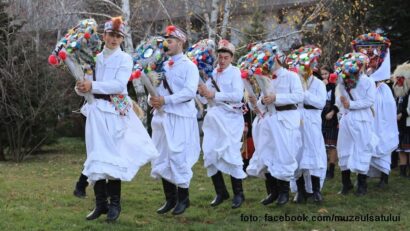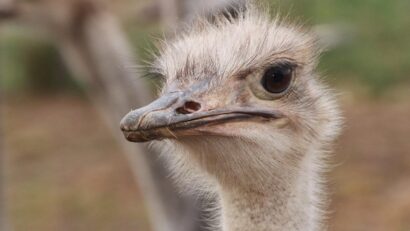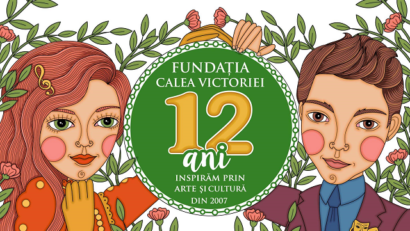The childhood house, a village museum
Ion Pleș of Ieud, Maramures County, turned his grandparents' old house into a museum

Ana-Maria Cononovici, 19.08.2025, 12:00
When it was built in 1835, it had the number 729 on the gate, and had a river stone with a hole in it hung on the door, according to local custom, to keep away evil spirits: it is the house of the grandparents of artisan Toderău, as he is known in the area. Coming from a family of woodcarvers, Ion Pleș, from the commune of Ieud, Maramures County, carves tomb crosses even today, crosses with a roof, like the ones seen in the local cemeteries. With special appreciation for everything his grandfather left him, “Toderău’s grandson”, as he is nicknamed, created a village museum in which he presents everything the old man and his wife had collected, a collection almost as rich as that of the Bârsana Monastery Museum, except for the icons, although you can find some here too, naively painted, on glass.
The craftsman welcomes his visitors with enthusiasm every time, first in his workshop and then in the house-museum, bringing the story of his grandparents to life: “Here you have come to the Artisan Toderău’s Museum, first of all, welcome! I make crosses for the cemetery, tables and chairs. We can now go outside. This is my grandfather’s house and maybe even his grandfather’s. The house was here, I kept it and moved it to where it now stands. Let me tell you what we find inside: here we have the ‘scutcher’ (a primitive wooden tool, used in the domestic industry to separate fibers by beating, i.e. freeing hemp and flax fibers from their woody parts, to separate the tow flax or hemp or to obtain oakum); people used to bring the hemp from the pond where it had been left to soak in water and then beat it with a scutcher, then they passed it through a brush, like this, to separate the core. Here, for example, we have the scale, with wooden plates, that’s how cheese and other stuff was weighed. Here you would place the cheese, over there a stone, as a weight. Here you can see a kind of machine, a chair for making mashed potatoes: people used to put the potatoes in and press them while sitting. A lot of potatoes were used in the corn bread, because we did not have too much wheat.”
Horse saddles, bags that were put on horses for transporting products, bee boxes, originally made primitively, from rye straw husks, all can be found in the workshop at the entrance to the house. We also learned from the artisan that his grandmother was a cook, she used to cook for village events, weddings, baptisms or funerals, which explains the wealth of mechanisms that can be seen in the household. Before entering the house, you are greeted by the polystyrene figures of his grandparents, dressed in traditional attire.
Here is Ion Pleș with details: “I kept the house, and I thought of also keeping the old man and his wife. I dressed them in traditional costumes, as they used to get dressed in their lifetime. Peasant sandals, pieces of cloth or fabric with which peasants (sometimes the soldiers too) wrapped their feet, instead of socks, made of hemp, skirts made of woven hemp, black wool coat, traditional shirt, which also has a collar, an ornament of multicolored balls that women wear tightly around their neck, winter kerchief made of black wool, that’s what married women wore, and unmarried women wore colored kerchiefs. I also kept the bag she used to go shopping with. That’s the old woman. The old man is dressed in rubber peasant sandals, hemp socks, and woolen trousers. This is the bag, this is where he kept his tobacco, his pipe, his glasses and his tools, which he always carried with him. And he had a belt where he put his money. For example, the old people used to chew tobacco, I know that my grandfather used to do that, he took the tobacco out of his pipe and put it in his mouth and chewed it all the time to strengthen his teeth.”
These people lived more than 90 years, being active until the last moment, which is why the grandfather is represented with a wooden crutch.
Beyond other stories about the customs of the time, craftsman Toderău also showed us what his grandmother cooked, as well as the mechanisms his grandfather worked on, all very advanced for those times: “This is the slab on which pies were made. The peasants used to make baked pies, not fried in oil like today. They greased them with fat obtained from pumpkin or hemp seeds and put them in the oven. They also had pots in which they made bread with cabbage, they put it in the oven in this small pot, a sort of billycan, in which polenta was also made. Inside the house we can also find the old man’s working tools as he used to manufacture cart wheels, windows, he made all kinds of things. This is the lathe that was operated with the foot, because there was no electricity back then. These are traps for catching animals, with this trap the old man caught a wild boar in the forest.”
In the house you can see hundreds of traditionally sewn shirts for both men and women, a baby cradle, as well as a doll cradle, a wooden walker, a loom, pillows, as well as a small bible that accompanied the grandfather everywhere, and a few icons painted on glass. Smaller or larger ceramic pots are also on display, and visitors are invited, at the end, to taste traditional plum or blueberry brandy, in memory of the hardworking grandparents who created this household. Their life was concentrated in a few rooms and annexes, and life unfolds in the slow rhythm of the place. (LS)






























